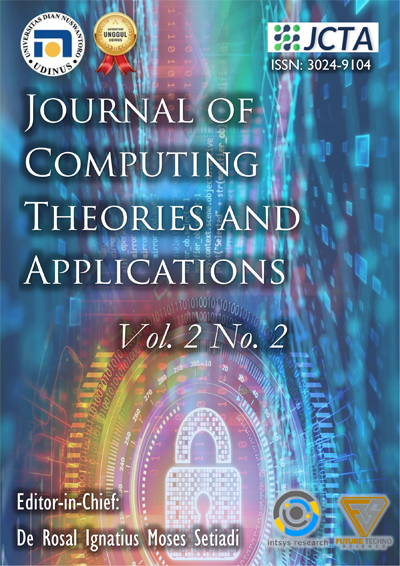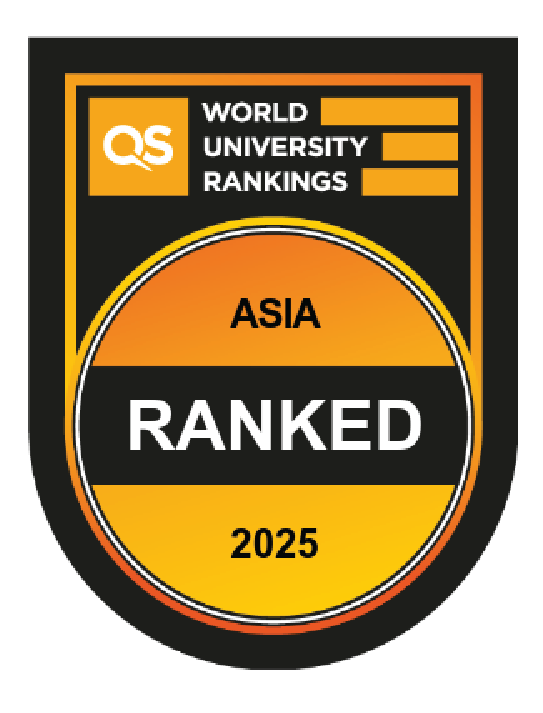Enhancing Cloud Task Scheduling with Multi-Objective Optimization Using K-Means Clustering and Dynamic Resource Allocation
DOI:
https://doi.org/10.62411/jcta.11337Abstract
The scheduling and resource allocation procedure is an essential component of cloud resource management. Effective resource allocation is severely hampered by the task arrival rates' erratic and unclear behavior. To prevent under or overusing resources, an effective scheduling strategy is necessary. To improve scheduling and allocation performance, a multi-objective optimization technique is presented for the best resource allocation and task scheduling inside scientific workflow datasets in a heterogeneous environment. In the first stage, the system calculates four key metrics: Communication Cost, Computation Cost, Earliest Finished Time on a particular VM, and Total Task Length for a specific scientific workflow dataset. These metrics provide a comprehensive understanding of the resource requirements and help make informed scheduling decisions. In the second stage, tasks are clustered using the K-Means clustering algorithm. This clustering groups similar tasks together, making managing and scheduling them easier. In the third stage, the proposed resource allocation algorithm allocates the clustered tasks to the appropriate VMs. This step ensures that the tasks are assigned to the best-suited resources, optimizing the overall system performance and resource utilization. By following this multi-stage process, the system aims to achieve optimal resource allocation and task scheduling, thereby improving the efficiency and effectiveness of cloud resource management. The proposed method significantly outperforms PSO, CSO, and GWO by consistently achieving lower Makespan—under 400 units at 50 tasks—while maintaining high resource utilization rates above 0.75, demonstrating superior efficiency in task execution and resource management.References
T. Bezdan, M. Zivkovic, N. Bacanin, I. Strumberger, E. Tuba, and M. Tuba, “Multi-objective task scheduling in cloud computing environment by hybridized bat algorithm,” J. Intell. Fuzzy Syst., vol. 42, no. 1, pp. 411–423, Dec. 2021, doi: 10.3233/JIFS-219200.
A. Mohammadzadeh, M. Masdari, F. S. Gharehchopogh, and A. Jafarian, “Improved chaotic binary grey wolf optimization algorithm for workflow scheduling in green cloud computing,” Evol. Intell., vol. 14, no. 4, pp. 1997–2025, Dec. 2021, doi: 10.1007/s12065-020-00479-5.
M. S. Sanaj and P. M. Joe Prathap, “Nature inspired chaotic squirrel search algorithm (CSSA) for multi objective task scheduling in an IAAS cloud computing atmosphere,” Eng. Sci. Technol. an Int. J., vol. 23, no. 4, pp. 891–902, Aug. 2020, doi: 10.1016/j.jestch.2019.11.002.
M. Masdari, S. Gharehpasha, M. Ghobaei-Arani, and V. Ghasemi, “Bio-inspired virtual machine placement schemes in cloud computing environment: taxonomy, review, and future research directions,” Cluster Comput., vol. 23, no. 4, pp. 2533–2563, Dec. 2020, doi: 10.1007/s10586-019-03026-9.
M. Adhikari, T. Amgoth, and S. N. Srirama, “Multi-objective scheduling strategy for scientific workflows in cloud environment: A Firefly-based approach,” Appl. Soft Comput., vol. 93, p. 106411, Aug. 2020, doi: 10.1016/j.asoc.2020.106411.
M. Farid, H. S. Lim, C. P. Lee, and R. Latip, “Scheduling Scientific Workflow in Multi-Cloud: A Multi-Objective Minimum Weight Optimization Decision-Making Approach,” Symmetry (Basel)., vol. 15, no. 11, p. 2047, Nov. 2023, doi: 10.3390/sym15112047.
M. Farid, R. Latip, M. Hussin, and N. Asilah Wati Abdul Hamid, “Weighted-adaptive Inertia Strategy for Multi-objective Scheduling in Multi-clouds,” Comput. Mater. Contin., vol. 72, no. 1, pp. 1529–1560, 2022, doi: 10.32604/cmc.2022.021410.
M. Farid, R. Latip, M. Hussin, and N. A. W. Abdul Hamid, “Scheduling Scientific Workflow Using Multi-Objective Algorithm With Fuzzy Resource Utilization in Multi-Cloud Environment,” IEEE Access, vol. 8, pp. 24309–24322, 2020, doi: 10.1109/ACCESS.2020.2970475.
H. Mahmoud, M. Thabet, M. H. Khafagy, and F. A. Omara, “Multi-objective Task Scheduling in Cloud Environment Using Decision Tree Algorithm,” IEEE Access, vol. 10, pp. 36140–36151, 2022, doi: 10.1109/ACCESS.2022.3163273.
H. Mahmoud, M. Thabet, M. H. Khafagy, and F. A. Omara, “An efficient load balancing technique for task scheduling in heterogeneous cloud environment,” Cluster Comput., vol. 24, no. 4, pp. 3405–3419, Dec. 2021, doi: 10.1007/s10586-021-03334-z.
S. Ghafir, M. A. Alam, F. Siddiqui, S. Naaz, S. S. Sohail, and D. Ø. Madsen, “Toward optimizing scientific workflow using multi-objective optimization in a cloud environment,” Cogent Eng., vol. 11, no. 1, Dec. 2024, doi: 10.1080/23311916.2023.2287303.
M. N. Aktan and H. Bulut, “Metaheuristic task scheduling algorithms for cloud computing environments,” Concurr. Comput. Pract. Exp., vol. 34, no. 9, Apr. 2022, doi: 10.1002/cpe.6513.
N. Arora and R. K. Banyal, “A Particle Grey Wolf Hybrid Algorithm for Workflow Scheduling in Cloud Computing,” Wirel. Pers. Commun., vol. 122, no. 4, pp. 3313–3345, Feb. 2022, doi: 10.1007/s11277-021-09065-z.
A. Belgacem and K. Beghdad-Bey, “Multi-objective workflow scheduling in cloud computing: trade-off between makespan and cost,” Cluster Comput., vol. 25, no. 1, pp. 579–595, Feb. 2022, doi: 10.1007/s10586-021-03432-y.
M. Hariri, M. Nouri-Baygi, and S. Abrishami, “A hybrid algorithm for scheduling scientific workflows in IaaS cloud with deadline constraint,” J. Supercomput., vol. 78, no. 15, pp. 16975–16996, Oct. 2022, doi: 10.1007/s11227-022-04563-8.
N. Malik, M. Sardaraz, M. Tahir, B. Shah, G. Ali, and F. Moreira, “Energy-Efficient Load Balancing Algorithm for Workflow Scheduling in Cloud Data Centers Using Queuing and Thresholds,” Appl. Sci., vol. 11, no. 13, p. 5849, Jun. 2021, doi: 10.3390/app11135849.
S. Mangalampalli, G. R. Karri, and G. N. Satish, “Efficient Workflow Scheduling algorithm in cloud computing using Whale Optimization,” Procedia Comput. Sci., vol. 218, pp. 1936–1945, 2023, doi: 10.1016/j.procs.2023.01.170.
G. Natesan and A. Chokkalingam, “Optimal Task Scheduling in the Cloud Environment using a Mean Grey Wolf Optimization Algorithm,” Int. J. Technol., vol. 10, no. 1, p. 126, Jan. 2019, doi: 10.14716/ijtech.v10i1.1972.
K. Sreenu and S. Malempati, “FGMTS: Fractional grey wolf optimizer for multi-objective task scheduling strategy in cloud computing,” J. Intell. Fuzzy Syst., vol. 35, no. 1, pp. 831–844, Jul. 2018, doi: 10.3233/JIFS-17148.
K. Sreenu and S. Malempati, “MFGMTS: Epsilon Constraint-Based Modified Fractional Grey Wolf Optimizer for Multi-Objective Task Scheduling in Cloud Computing,” IETE J. Res., vol. 65, no. 2, pp. 201–215, Mar. 2019, doi: 10.1080/03772063.2017.1409087.
Downloads
Published
How to Cite
Issue
Section
License
Copyright (c) 2024 July Lwin

This work is licensed under a Creative Commons Attribution 4.0 International License.















